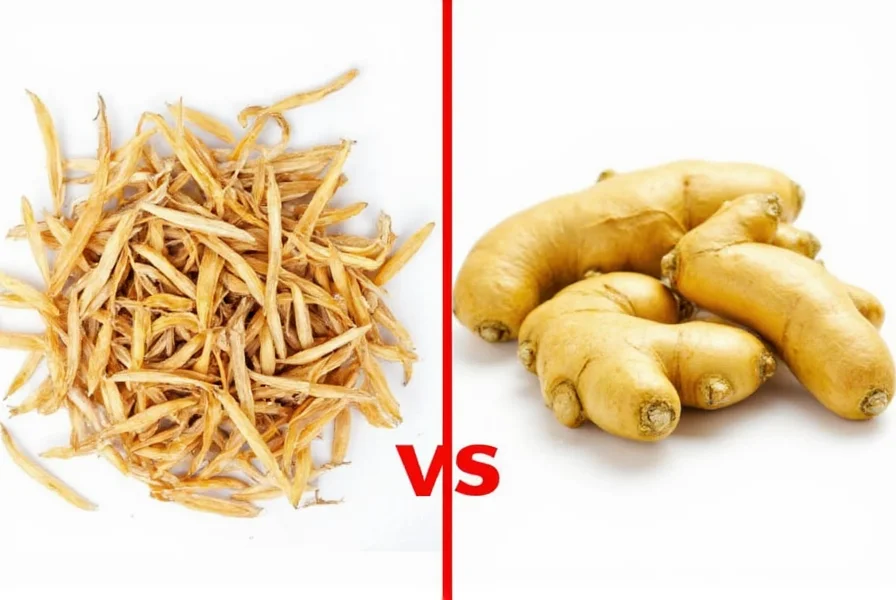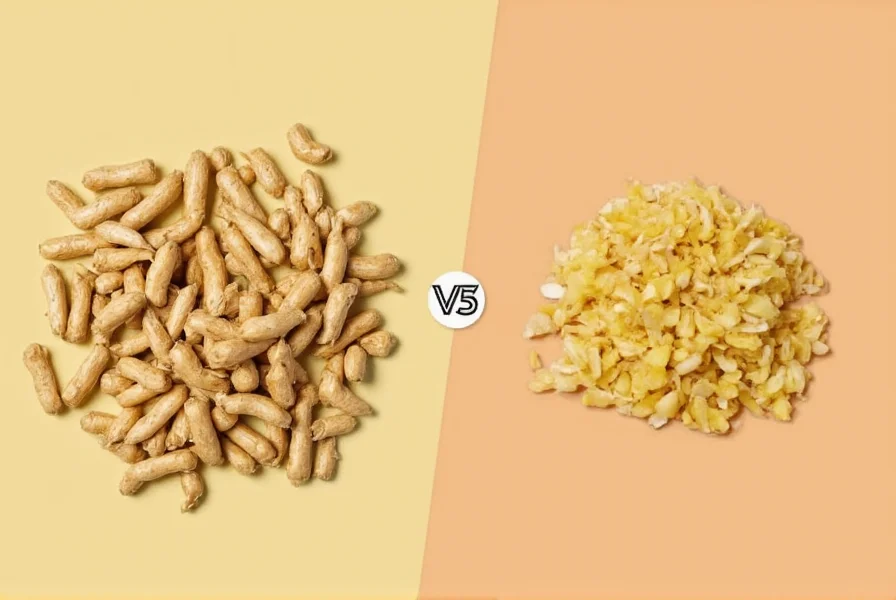When searching for information about ginseng vs ginger, many people assume these botanicals are closely related due to their similar names and root-like appearance. This common misconception leads to confusion about their proper uses and benefits. Understanding the fundamental differences between these two plants is essential for making informed decisions about their culinary and wellness applications.
Botanical Classification and Origins
Ginseng and ginger originate from completely different plant families. Ginseng belongs to the Panax genus within the Araliaceae family, with Asian ginseng (Panax ginseng) and American ginseng (Panax quinquefolius) being the most common varieties. Ginger, by contrast, is Zingiber officinale from the Zingiberaceae family, which also includes turmeric and cardamom.
The term "ginseng" specifically refers to plants in the Panax genus, while "true ginger" refers only to Zingiber officinale. This ginseng ginger comparison reveals they're as different botanically as apples are to oranges.
| Characteristic | Ginseng | Ginger |
|---|---|---|
| Botanical Family | Araliaceae | Zingiberaceae |
| Active Compounds | Ginsenosides | Gingerols |
| Primary Traditional Use | Adaptogen, energy booster | Digestive aid, anti-nausea |
| Taste Profile | Bitter, earthy, slightly sweet | Pungent, spicy, warm |
| Harvest Time | 4-6 years for maturity | 8-10 months for maturity |
Physical Characteristics and Identification
Visually distinguishing ginseng root vs ginger root is straightforward once you know what to look for. Ginseng roots typically have a human-shaped form with distinct "arms" and "legs," giving rise to its Chinese name "rénshēn" (man root). They're usually tan to beige with a gnarled appearance. Mature ginseng roots often show growth rings that indicate their age.
Ginger rhizomes, conversely, have segmented, knobby appearance with smooth skin that ranges from pale yellow to brown. They grow horizontally rather than vertically like ginseng. When purchasing, remember that are ginseng and ginger the same is a common question with a definitive answer: they're visually and structurally distinct.

Culinary Applications and Flavor Profiles
The ginseng vs ginger taste difference significantly impacts their culinary uses. Ginger's pungent, spicy flavor makes it a staple in both sweet and savory dishes across Asian, Indian, and Caribbean cuisines. It's commonly used fresh, dried, pickled, or powdered in recipes ranging from stir-fries to gingerbread.
Ginseng, however, has a much more subtle presence in cooking. Its bitter, earthy flavor means it's rarely used as a primary ingredient in everyday cooking. Instead, it's typically consumed as tea, in soups (particularly in Korean cuisine), or as a supplement. The difference between ginseng and ginger in culinary contexts is substantial—one is a flavor-forward ingredient while the other is primarily used for its purported wellness properties.
Active Compounds and Research Insights
The scientific distinction between these plants centers on their active compounds. Ginseng's primary bioactive components are ginsenosides (also called panaxosides), which number over 150 different types. These compounds are believed to contribute to ginseng's adaptogenic properties—helping the body resist stressors.
Ginger's key compounds are gingerols and shogaols, which give it its characteristic heat and are the focus of research regarding digestive health and inflammation. While both have been subjects of scientific study, the ginseng vs ginger benefits differ significantly. Research on ginseng often focuses on cognitive function and energy levels, while ginger research typically examines nausea relief and digestive support.
Safety Considerations and Interactions
Understanding ginseng and ginger side effects is crucial for safe usage. Ginger is generally recognized as safe by regulatory agencies and commonly used during pregnancy for morning sickness (though consultation with a healthcare provider is recommended).
Ginseng requires more caution, particularly for those taking blood thinners, diabetes medications, or antidepressants. Long-term ginseng use may cause insomnia, headaches, or digestive issues in some individuals. Neither should be considered a replacement for medical treatment, and those with specific health conditions should consult healthcare professionals before regular use.

When to Choose One Over the Other
For digestive discomfort or morning sickness, ginger is typically the better choice based on traditional use and research. For situations requiring increased mental clarity or adaptation to stress, ginseng may be more appropriate. Some people wonder can you use ginseng and ginger together—while they can be combined in teas or supplements, it's wise to start with small amounts to assess individual tolerance.
The decision between these botanicals should consider your specific needs, health status, and desired outcomes. Neither is inherently "better"—they simply serve different purposes based on their unique properties.
Conclusion
The ginseng vs ginger comparison reveals two distinct botanicals with unique properties and applications. While both have valued places in traditional wellness practices, they differ fundamentally in their botanical classification, active compounds, and primary uses. Recognizing these differences helps consumers make informed choices about which might better suit their needs without falling for common misconceptions about their similarities.
Frequently Asked Questions
Are ginseng and ginger related botanically?
No, ginseng and ginger are not closely related. Ginseng belongs to the Araliaceae family (Panax genus), while ginger is part of the Zingiberaceae family. They're as botanically distinct as apples are to oranges, despite both being root-based plants used in traditional wellness practices.
Can I use ginseng and ginger together?
Yes, many traditional preparations combine ginseng and ginger, particularly in teas and soups. However, because both can affect blood pressure and blood sugar levels, it's advisable to consult with a healthcare provider before regular combined use, especially if you have underlying health conditions or take medications.
Which is better for energy—ginseng or ginger?
Ginseng is traditionally used as an adaptogen for sustained energy and mental clarity, while ginger provides a more immediate warming effect that some perceive as energizing. Ginseng's effects are generally more pronounced for combating fatigue, whereas ginger's primary benefits relate to digestion rather than energy enhancement.
Do ginseng and ginger have similar health benefits?
While both have been used traditionally for wellness, their primary benefits differ significantly. Ginger is primarily associated with digestive health and nausea relief, while ginseng is traditionally used for enhancing vitality and supporting the body's response to stress. They share some anti-inflammatory properties but work through different mechanisms.
How can I tell real ginseng from fake products?
Authentic ginseng products should specify the species (Panax ginseng or Panax quinquefolius) and standardization of ginsenosides. Look for products from reputable suppliers with third-party testing verification. Be wary of extremely low-priced products, as genuine ginseng requires 4-6 years to mature, making authentic products relatively expensive compared to substitutes.











 浙公网安备
33010002000092号
浙公网安备
33010002000092号 浙B2-20120091-4
浙B2-20120091-4